Everything you need to know about 5G on your iPhone 12
Carriers in the United States are rolling out 5G mobile networks -- but aren't being transparent about what it actually means for users. Here's what 5G is, what it means to users, as well as what to realistically expect in the coming years.
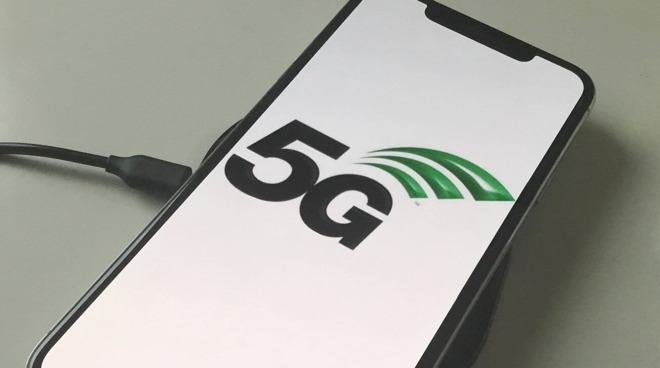
With the promise of gigabit speeds, far exceeding that of 4G LTE, 5G offers the possibility for home broadband services to be provided over cellular networks, bringing the higher-speed services to areas that are too cost-prohibitive for laying cable. The higher bandwidth on offer can also enable a greater use of IPTV or streaming video services, both to the home and to mobile devices.
The infrastructure could also be used to provide device-to-device communications, such as that of Internet of Things hardware, smart home systems, and even for self-driving cars to more effectively communicate with adjacent vehicles, and cloud servers for navigational assistance.
As networks are in the process of slowly rolling out their 5G networks, it's going to be a few years before the technology becomes commonplace, a fact confirmed by the carriers. Even with blanket coverage, which should be more resilient in general than other established communications technologies, some users just won't be able to experience 5G at its optimum speeds.
To see why, you have to look at 5G, the technologies behind it, and the mish-mash of companies rolling it out in more detail.
LTE Release-15, 3GPP's first-phase release of 5G's specifications, is frozen and scheduled to be completed sometime in 2019, while a second-phase Release-16 will complete at some point in 2020. The releases are effectively endpoints for the development of functionality in each release, giving a definitive point where it is safe for hardware vendors to incorporate functions into infrastructure to be used by carriers, and devices for consumers.
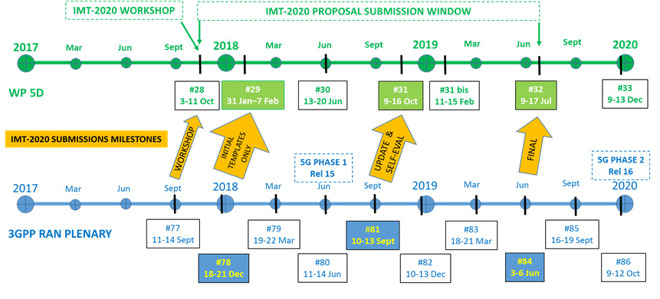
3GPP's schedule for Release 16, which includes the development of the second phase of 5G's standards.
In theory, each frozen release will refine the associated 5G standards, bringing those incorporating them into their networks closer to what a 5G network is supposed to be.
Technically, 5G as a whole will rely on 4G as a crutch for its initial implementations, in order for devices to make a connection to the network before being bumped up to the newer technology, despite 5G NR not being compatible with 4G networks directly. These non-standalone mode (NSA) networks will give way to standalone (SA) mode networks eventually, in areas with fully deployed 5G transmitters, once the technology matures.
Some of these bands have been freed up by the FCC in various ways over the years, such as in the 2008 wireless spectrum auction for 700MHz spectrum, which was previous used for analog television broadcasting until the FCC determined it was spectrally inefficient. Carriers can also free up bands it already owns and uses for other purposes, repurposing them for 5G communications.
As 5G networks use OFDM bonding to enable multiple channels to be bonded together, with channels being both bigger than 4G and able to be grouped together in larger clusters, this enables 5G networks to offer generally larger swathes of bandwidth than possible under 4G.
For 5G specifically, frequencies can be generally categorized into one of two groups -- low-frequency sub-6GHz bands, and higher-frequency 6GHz bands. The first low range consists of bands that are currently used for existing mobile network communications, as low as 600MHz and up to 2,600MHz, though it can also include "C-Bands" up to 4,700MHz.
The second range, above 6GHz, is far higher in frequency than current systems operate, with four bands operating at between 24GHz and 39GHz.
Each of the two band ranges offer their own benefits and limitations to carriers, meaning the two can be used in quite different ways, each with its own engineering challenges for roll-out.
While resilient, making them great for placing fewer masts to blanket an area than higher bands, the lower range bands are also limited in terms of the amount of bandwidth each can offer. Generally speaking, the lower the number of hertz, the less data can be transmitted at a specific frequency.
This can be mitigated by the use of multiple frequencies transmitting many packets of data simultaneously, but as there's only so many times it can be done, it's not an effective solution. There's also the option of using more bands, though again this can only go so far.
For end users, this means they will be able to get a 5G signal, but it won't necessarily be able to operate at the headline gigabit-plus speeds that the carriers are screaming about, with the end-user getting closer to what is offered by 4G LTE now.
Unlike the low-range bands that are used for many common applications, the high-range versions benefit from having relatively little competition, meaning there is more available bandwidth to use with minimal chance of interference.
The term mmWave is also used as part of 5G discussions, and it refers to millimeter wave, a set of spectrum bands that typically reside above 30GHz and below 300GHz. As the bands in the higher frequency range are either part of this group or pretty close to it, they are typically referred to by the title for the sake of convenience.
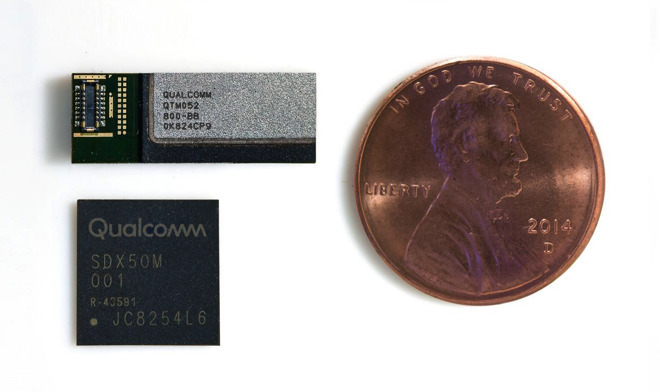
Qualcomm's 5G NR mmWave module and antenna, with penny for scale.
The ability to use mmWave in a commercial manner, especially with the promise of extremely high data transfer rates, has been a technological hurdle, and remains so. For example, it typically has a practical range measurable in hundreds of feet, meaning it is only really useful in areas with a larger density of potential users, rather than for rural applications.
Stand someplace outside and aim a laser pointer at a telephone pole. If your vision is okay, and you can see the dot at night, in theory, that spot you're standing on can receive mmWave broadcasts from hardware on that pole, after installation.
We mentioned the laser pointer test being performed outside. There's a reason for this -- unlike 4G LTE, mmWave is easily blocked by walls, glass, some metal screens on windows, tree leaves, rain, and other obstructions including the human body. This makes mmWave able to be used for fixed-point communications between buildings, or wirelessly from a telephone pole to a 5G modem on the outside of your house, but less useful for a smartphone used indoors.
Due to these limitations, mmWave has already been discounted from being used for countrywide 5G coverage. In April, T-Mobile CTO Neville Ray argued mmWave "will never materially scale beyond small pockets of 5G hotspots in dense urban environments," citing its travel and penetration limitations.
Verizon chimed in one day later, with CEO Hans Vestberg commenting "We all need to remind ourselves this is not a coverage spectrum."
Ultimately, this means only urban-based users in areas that carriers see value in spending millions of dollars on infrastructure that can't just be tossed up on existing towers are the only areas that will benefit from the highest speeds 5G will be able to offer. As with the slow rollout of 4G, this leaves rural users to a connection that, while better than 4G LTE, won't live up to the hype that's already begun.
Simply titled "Spectrum Sharing," it is a system where spectrum within a specific band can be allocated to either 4G or 5G network usage at any time. Under a system demonstrated by Ericsson at Mobile World Congress 2019, it was able to have a band used for both 4G and 5G connectivity within the same frequency carrier.
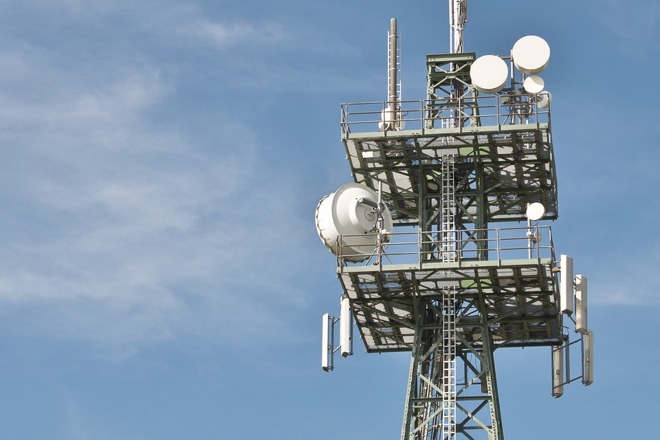
Using the same equipment for 4G and 5G networks could save carriers time and money with their 5G deployment.
As the band can change the allocations to each at any time, based on the traffic demand for each, it can change the ratio to reduce one type of connectivity for another when warranted. For example, if there is a large number of 4G-based users connected to a mast and only one 5G device, the system could easily reduce the spectrum used for 5G coverage while offering more for 4G.
For carriers, this provides a number of benefits, including reducing the need to acquire or use more band licenses to provide 5G connectivity in an area. It also means that there isn't necessarily a need for both 4G and 5G equipment to be installed in the same location, and depending on the equipment, it could even roll out 5G with Spectrum Sharing enabled to existing supported 4G hardware via a software update in some cases.
Spectrum Sharing is a relatively elegant cost-saving and spectrum-saving solution for carriers, while also providing both 4G and 5G service in areas for consumers.
Since then, carriers have been hard at work to flesh out their networks, with AT&T declaring its 5G network as available across the US in July 2020 and T-Mobile doing likewise in August for its "standalone" 5G network in 7,500 cities.
However, it's worth mentioning that the US Federal Communications, and the carriers consider an area serviced, even if one address in an entire census block has the technology.
Even with the initial rollouts in limited areas, they were also of questionable value to consumers at this stage. Verizon offered a 5G Home service in 2018 that works with the carrier's "proprietary 5G standard," meaning it effectively isn't compatible with other standard 5G hardware, but it does have the Moto Z3 and the Samsung Galaxy S10 5G as smartphones for its standard carrier service.
AT&T was in a relatively similar situation in 2019, where its 5G network is only compatible with the Netgear Nighthawk 5G Mobile Hotspot, though it is also working with Samsung to bring two 5G models to the network.
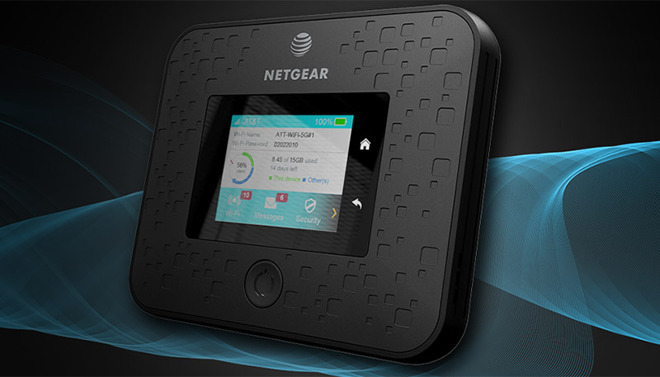
Netgear's Nighthawk 5G Mobile Hotspot is required for accessing AT&T's initial 5G network.
At that early stage, consumers simply didn't have the breadth of choice available to them in terms of what devices they can use with 5G, let alone the inability to use 5G in the vast majority of the United States at the time, and arguably still don't. The international situation is somewhat better, but any kind of wide 5G rollout is still on the horizon.
As in the vast majority of cases carriers will need to add new equipment on the neighborhood level, and will have to make changes to existing technology on masts, the rollout of 5G will take a very long time due to the sheer scale of the area of the United States. The size also equals expense, with the changes to infrastructure likely to cost carriers billions to implement.
The cost of the rollout is also affected by the chicken-and-egg problem with consumer devices. As there are few consumer devices available on the market capable of connecting to a 5G network, there is little incentive for carriers to spend so much on upgrading their networks to a technology that barely anyone would use at the moment.
At the same time, the vast majority consumers are unlikely to want to buy a 5G smartphone, and won't be serviced for the price premium that they'll have to pay in the short term. The technology will almost certainly be limited to premium flagship models for the immediate future, unless there is enough access to a 5G network that they would be able to use.
Even with the rollout of infrastructure, consumers will not be able to enjoy the extremely high speeds 5G promises for quite some time longer. Standards for 5G communications are still being worked on, and even after being finalized, they have to be implemented by carriers in their respective networks.
A good example is 4G LTE, which has taken most of a decade to become widespread and accessible for most mobile users. It is highly likely that 5G will have a similar timescale before it becomes widely available, as well as offering those promised high speeds.
For the moment, the announcements for a 5G rollout are less of an indicator as to a carrier's progress, more one of marketing that they are ready for the future. Sadly, this has some unintended consequences.
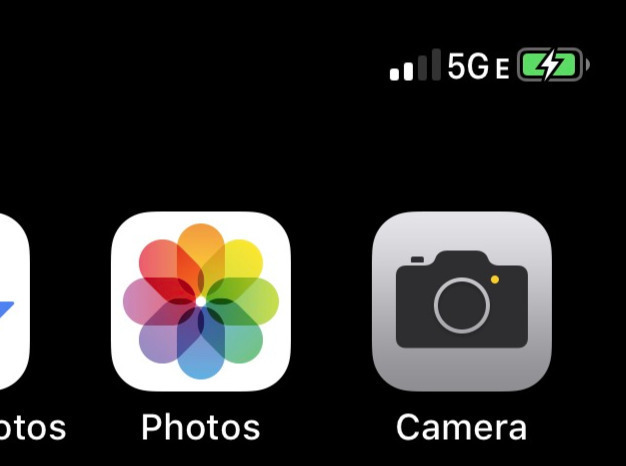
AT&T made a "5G E" graphic appear as the network speed indicator in iOS, despite really being a 4G LTE network.
AT&T conducted a questionable marketing campaign to try and encourage customers to use its "5G E" connection, which was really its 4G LTE service but in areas with network improvements. On April 22, AT&T and Sprint settled a lawsuit over the matter, though AT&T elected to continue using the marketing term, something which may continue to confuse customers into thinking they have a 5G-ready device when in fact it is just able to connect over 4G LTE.
Following the 2019 settlement with Qualcomm, which includes an agreement that allows Apple to use Qualcomm modems in the iPhone, Apple took advantage of the situation to introduce 5G to its devices, starting with the iPhone.
Analysts speculated on 5G iPhones arriving in 2020, as carriers will have deployed sufficient amounts of 5G hardware to make its use viable. There were also suggestions of Apple using improved antenna technology in a 2020 iPad Pro refresh, one that could lead to 5G cellular iPads by 2021.
For consumers, connections to 5G networks will be possible where available, and they will receive the coverage and the added benefit of having more connection bandwidth to use. This last point could lead to having slightly faster networks than LTE, especially if the existing LTE networks are at capacity.
Apple has also implemented a system in the iPhones where it will employ 5G networks when the need for speed and bandwidth is required, but it will take the opportunity to fall back to 4G LTE networks where possible to conserve battery power.
There may be one group of iPhone users who may be unhappy with the 2020 iPhone launches. October surveys claim 49% of US consumers believe they already had a 5G-compliant iPhone, fueled by carrier hype and initiatives like AT&T's 5G E logo for its 4G networks.
We've said this in 2019, and are still saying it now. Sure, carriers have been working hard to deploy 5G networks, but we're still relatively early in the 5G lifecycle.
We've been here before. Apple critics burned a lot of hours talking about how the company was late to 3G, then again to 4G. In both of those times, the carriers were harping away at the benefits of a network that wasn't available to many at all, and charging top-dollar for those connections that weren't any better than the predecessor.
It's highly likely that such complaints will be made about 5G as well, even after Tuesday's "iPhone 12" release brings it to far more American customers.
We're looking forward to the 5G future. We want to see secure autonomous cars ripping down major highways, we want to see ubiquitous 5G technology with the potential to increase efficiencies by shippers, help out with traffic flows, speed emergency responders' arrivals to those in need, and all the other things that the carriers have promised will come with that technology.
But, none of it is here, yet. And, it's going to take a while.
Updated on November 3, 2020 to reflect the release of the iPhone 12 and the state of 5G rollouts

What's been promised
According to the carriers and analysts alike, 5G will provide as much if not more of a seismic shift in connectivity as compared to when 4G LTE rolled out to the masses a few years ago. Just as the shift from 2G communications to 3G provided a speed boost, as did going from 3G to 4G LTE, the move to 5G will in theory provide many people with more speed, and more of an opportunity to use services that would not typically be used on current-generation networks.With the promise of gigabit speeds, far exceeding that of 4G LTE, 5G offers the possibility for home broadband services to be provided over cellular networks, bringing the higher-speed services to areas that are too cost-prohibitive for laying cable. The higher bandwidth on offer can also enable a greater use of IPTV or streaming video services, both to the home and to mobile devices.
The infrastructure could also be used to provide device-to-device communications, such as that of Internet of Things hardware, smart home systems, and even for self-driving cars to more effectively communicate with adjacent vehicles, and cloud servers for navigational assistance.
As networks are in the process of slowly rolling out their 5G networks, it's going to be a few years before the technology becomes commonplace, a fact confirmed by the carriers. Even with blanket coverage, which should be more resilient in general than other established communications technologies, some users just won't be able to experience 5G at its optimum speeds.
To see why, you have to look at 5G, the technologies behind it, and the mish-mash of companies rolling it out in more detail.
Setting Standards
Referring to the "Fifth Generation" technology, 5G effectively refers to any communications network that uses "5G NR" technology. This is developed by the 3GPP, a standards organization that creates the protocols used for mobile communications, with 3GPP's standards used across multiple carriers around the world in order for devices to work between networks with minimal issues.LTE Release-15, 3GPP's first-phase release of 5G's specifications, is frozen and scheduled to be completed sometime in 2019, while a second-phase Release-16 will complete at some point in 2020. The releases are effectively endpoints for the development of functionality in each release, giving a definitive point where it is safe for hardware vendors to incorporate functions into infrastructure to be used by carriers, and devices for consumers.

3GPP's schedule for Release 16, which includes the development of the second phase of 5G's standards.
In theory, each frozen release will refine the associated 5G standards, bringing those incorporating them into their networks closer to what a 5G network is supposed to be.
Technically, 5G as a whole will rely on 4G as a crutch for its initial implementations, in order for devices to make a connection to the network before being bumped up to the newer technology, despite 5G NR not being compatible with 4G networks directly. These non-standalone mode (NSA) networks will give way to standalone (SA) mode networks eventually, in areas with fully deployed 5G transmitters, once the technology matures.
A Wide Array of Radio Bands
In order for 5G networks to function, they need to be assigned bits of the radio spectrum in order to function. This is determined in the United States by the Federal Communications Commission, in a series of spectrum auctions where carriers bid for licenses dictating what frequencies (channels) they can use to communicate with consumer devices. This process is mostly over.Some of these bands have been freed up by the FCC in various ways over the years, such as in the 2008 wireless spectrum auction for 700MHz spectrum, which was previous used for analog television broadcasting until the FCC determined it was spectrally inefficient. Carriers can also free up bands it already owns and uses for other purposes, repurposing them for 5G communications.
As 5G networks use OFDM bonding to enable multiple channels to be bonded together, with channels being both bigger than 4G and able to be grouped together in larger clusters, this enables 5G networks to offer generally larger swathes of bandwidth than possible under 4G.
For 5G specifically, frequencies can be generally categorized into one of two groups -- low-frequency sub-6GHz bands, and higher-frequency 6GHz bands. The first low range consists of bands that are currently used for existing mobile network communications, as low as 600MHz and up to 2,600MHz, though it can also include "C-Bands" up to 4,700MHz.
The second range, above 6GHz, is far higher in frequency than current systems operate, with four bands operating at between 24GHz and 39GHz.
Each of the two band ranges offer their own benefits and limitations to carriers, meaning the two can be used in quite different ways, each with its own engineering challenges for roll-out.
Slow and Durable Low-Frequency Bands
The low band range offers what could be considered more traditional use cases for mobile networks, evident by many of the bands being in the same frequency areas as those used for 4G and other communication types. Its low frequency means it is capable of traveling quite far distances to and from masts and isn't blocked by much, making it ideal for covering an entire country.While resilient, making them great for placing fewer masts to blanket an area than higher bands, the lower range bands are also limited in terms of the amount of bandwidth each can offer. Generally speaking, the lower the number of hertz, the less data can be transmitted at a specific frequency.
This can be mitigated by the use of multiple frequencies transmitting many packets of data simultaneously, but as there's only so many times it can be done, it's not an effective solution. There's also the option of using more bands, though again this can only go so far.
For end users, this means they will be able to get a 5G signal, but it won't necessarily be able to operate at the headline gigabit-plus speeds that the carriers are screaming about, with the end-user getting closer to what is offered by 4G LTE now.
Faster but Fragile High-Frequency Bands and mmWave
On the other end of the scale, the higher bandwidth range is the one that stands to offer considerably higher data transfer rates. Where the lower band may only offer bandwidth in hundreds of megabits at best, the post-6GHz range stands to offer the gigabit speeds used to hype 5G.Unlike the low-range bands that are used for many common applications, the high-range versions benefit from having relatively little competition, meaning there is more available bandwidth to use with minimal chance of interference.
The term mmWave is also used as part of 5G discussions, and it refers to millimeter wave, a set of spectrum bands that typically reside above 30GHz and below 300GHz. As the bands in the higher frequency range are either part of this group or pretty close to it, they are typically referred to by the title for the sake of convenience.

Qualcomm's 5G NR mmWave module and antenna, with penny for scale.
The ability to use mmWave in a commercial manner, especially with the promise of extremely high data transfer rates, has been a technological hurdle, and remains so. For example, it typically has a practical range measurable in hundreds of feet, meaning it is only really useful in areas with a larger density of potential users, rather than for rural applications.
Stand someplace outside and aim a laser pointer at a telephone pole. If your vision is okay, and you can see the dot at night, in theory, that spot you're standing on can receive mmWave broadcasts from hardware on that pole, after installation.
We mentioned the laser pointer test being performed outside. There's a reason for this -- unlike 4G LTE, mmWave is easily blocked by walls, glass, some metal screens on windows, tree leaves, rain, and other obstructions including the human body. This makes mmWave able to be used for fixed-point communications between buildings, or wirelessly from a telephone pole to a 5G modem on the outside of your house, but less useful for a smartphone used indoors.
The hardware
In July, Qualcomm announced it had produced a fully-integrated 5G NR mmWave module for smartphones, one that actually uses up to four modules with each containing up to four antennas. Placed strategically in a smartphone or another device, this gives more opportunities for mmWave signals to be received or transmitted without being blocked by the user.Due to these limitations, mmWave has already been discounted from being used for countrywide 5G coverage. In April, T-Mobile CTO Neville Ray argued mmWave "will never materially scale beyond small pockets of 5G hotspots in dense urban environments," citing its travel and penetration limitations.
Verizon chimed in one day later, with CEO Hans Vestberg commenting "We all need to remind ourselves this is not a coverage spectrum."
Ultimately, this means only urban-based users in areas that carriers see value in spending millions of dollars on infrastructure that can't just be tossed up on existing towers are the only areas that will benefit from the highest speeds 5G will be able to offer. As with the slow rollout of 4G, this leaves rural users to a connection that, while better than 4G LTE, won't live up to the hype that's already begun.
Spectrum Sharing with 4G LTE
As the lower band range encompasses spectrum used for current mobile communications, and that some bands in the 5G range have some crossover with those currently used for 4G LTE and older technologies, this means a new type of bandwidth management technology could be used by carriers.Simply titled "Spectrum Sharing," it is a system where spectrum within a specific band can be allocated to either 4G or 5G network usage at any time. Under a system demonstrated by Ericsson at Mobile World Congress 2019, it was able to have a band used for both 4G and 5G connectivity within the same frequency carrier.

Using the same equipment for 4G and 5G networks could save carriers time and money with their 5G deployment.
As the band can change the allocations to each at any time, based on the traffic demand for each, it can change the ratio to reduce one type of connectivity for another when warranted. For example, if there is a large number of 4G-based users connected to a mast and only one 5G device, the system could easily reduce the spectrum used for 5G coverage while offering more for 4G.
For carriers, this provides a number of benefits, including reducing the need to acquire or use more band licenses to provide 5G connectivity in an area. It also means that there isn't necessarily a need for both 4G and 5G equipment to be installed in the same location, and depending on the equipment, it could even roll out 5G with Spectrum Sharing enabled to existing supported 4G hardware via a software update in some cases.
Spectrum Sharing is a relatively elegant cost-saving and spectrum-saving solution for carriers, while also providing both 4G and 5G service in areas for consumers.
A Long Rollout
While the carriers are building up the hype for 5G, it will be quite some time before it becomes a meaningful thing to consumers. Sprint expressed it would start launching its 5G service in a small number of cities in May 2019, then Verizon named more cities it would launch 5G in by the end of 2019, and AT&T insisted it would be able to nationally roll out 5G by early 2020.Since then, carriers have been hard at work to flesh out their networks, with AT&T declaring its 5G network as available across the US in July 2020 and T-Mobile doing likewise in August for its "standalone" 5G network in 7,500 cities.
However, it's worth mentioning that the US Federal Communications, and the carriers consider an area serviced, even if one address in an entire census block has the technology.
Even with the initial rollouts in limited areas, they were also of questionable value to consumers at this stage. Verizon offered a 5G Home service in 2018 that works with the carrier's "proprietary 5G standard," meaning it effectively isn't compatible with other standard 5G hardware, but it does have the Moto Z3 and the Samsung Galaxy S10 5G as smartphones for its standard carrier service.
AT&T was in a relatively similar situation in 2019, where its 5G network is only compatible with the Netgear Nighthawk 5G Mobile Hotspot, though it is also working with Samsung to bring two 5G models to the network.

Netgear's Nighthawk 5G Mobile Hotspot is required for accessing AT&T's initial 5G network.
At that early stage, consumers simply didn't have the breadth of choice available to them in terms of what devices they can use with 5G, let alone the inability to use 5G in the vast majority of the United States at the time, and arguably still don't. The international situation is somewhat better, but any kind of wide 5G rollout is still on the horizon.
As in the vast majority of cases carriers will need to add new equipment on the neighborhood level, and will have to make changes to existing technology on masts, the rollout of 5G will take a very long time due to the sheer scale of the area of the United States. The size also equals expense, with the changes to infrastructure likely to cost carriers billions to implement.
The cost of the rollout is also affected by the chicken-and-egg problem with consumer devices. As there are few consumer devices available on the market capable of connecting to a 5G network, there is little incentive for carriers to spend so much on upgrading their networks to a technology that barely anyone would use at the moment.
At the same time, the vast majority consumers are unlikely to want to buy a 5G smartphone, and won't be serviced for the price premium that they'll have to pay in the short term. The technology will almost certainly be limited to premium flagship models for the immediate future, unless there is enough access to a 5G network that they would be able to use.
Even with the rollout of infrastructure, consumers will not be able to enjoy the extremely high speeds 5G promises for quite some time longer. Standards for 5G communications are still being worked on, and even after being finalized, they have to be implemented by carriers in their respective networks.
A good example is 4G LTE, which has taken most of a decade to become widespread and accessible for most mobile users. It is highly likely that 5G will have a similar timescale before it becomes widely available, as well as offering those promised high speeds.
For the moment, the announcements for a 5G rollout are less of an indicator as to a carrier's progress, more one of marketing that they are ready for the future. Sadly, this has some unintended consequences.

AT&T made a "5G E" graphic appear as the network speed indicator in iOS, despite really being a 4G LTE network.
AT&T conducted a questionable marketing campaign to try and encourage customers to use its "5G E" connection, which was really its 4G LTE service but in areas with network improvements. On April 22, AT&T and Sprint settled a lawsuit over the matter, though AT&T elected to continue using the marketing term, something which may continue to confuse customers into thinking they have a 5G-ready device when in fact it is just able to connect over 4G LTE.
Apple's Interest in 5G
The biggest issue with 5G for Apple was when the company would be able to offer devices that can connect using the technology. The launch of the iPhone 12, iPhone 12 Mini, iPhone 12 Pro, and iPhone 12 Pro Max was that moment.Following the 2019 settlement with Qualcomm, which includes an agreement that allows Apple to use Qualcomm modems in the iPhone, Apple took advantage of the situation to introduce 5G to its devices, starting with the iPhone.
Analysts speculated on 5G iPhones arriving in 2020, as carriers will have deployed sufficient amounts of 5G hardware to make its use viable. There were also suggestions of Apple using improved antenna technology in a 2020 iPad Pro refresh, one that could lead to 5G cellular iPads by 2021.
For consumers, connections to 5G networks will be possible where available, and they will receive the coverage and the added benefit of having more connection bandwidth to use. This last point could lead to having slightly faster networks than LTE, especially if the existing LTE networks are at capacity.
Apple has also implemented a system in the iPhones where it will employ 5G networks when the need for speed and bandwidth is required, but it will take the opportunity to fall back to 4G LTE networks where possible to conserve battery power.
There may be one group of iPhone users who may be unhappy with the 2020 iPhone launches. October surveys claim 49% of US consumers believe they already had a 5G-compliant iPhone, fueled by carrier hype and initiatives like AT&T's 5G E logo for its 4G networks.
5G is the future, but it isn't today
There is no doubt, 5G is coming. That's a good thing. But, as a technology, 5G isn't really ready for prime time. And, even the carriers admit that the big-ticket high-speed aspects of 5G aren't for everybody, or even every area.We've said this in 2019, and are still saying it now. Sure, carriers have been working hard to deploy 5G networks, but we're still relatively early in the 5G lifecycle.
We've been here before. Apple critics burned a lot of hours talking about how the company was late to 3G, then again to 4G. In both of those times, the carriers were harping away at the benefits of a network that wasn't available to many at all, and charging top-dollar for those connections that weren't any better than the predecessor.
It's highly likely that such complaints will be made about 5G as well, even after Tuesday's "iPhone 12" release brings it to far more American customers.
We're looking forward to the 5G future. We want to see secure autonomous cars ripping down major highways, we want to see ubiquitous 5G technology with the potential to increase efficiencies by shippers, help out with traffic flows, speed emergency responders' arrivals to those in need, and all the other things that the carriers have promised will come with that technology.
But, none of it is here, yet. And, it's going to take a while.
Updated on November 3, 2020 to reflect the release of the iPhone 12 and the state of 5G rollouts



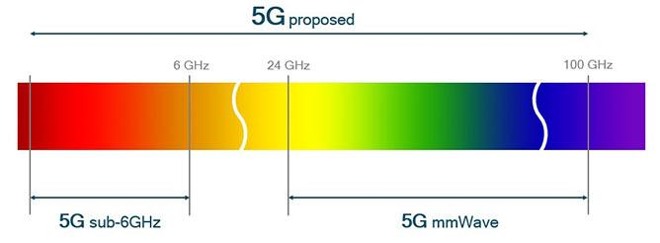
Comments
It's no easy task to present this stuff in an easy to digest, balanced fashion.
Short term, no change. Long term - questionable benefits. The problem with he gigabit speed promise is that, as the article says, the frequencies are highly susceptible to interference from trivial obstructions. Even rain. I guess that means Seattle is out. Getting wireless broadband would be nice, but if it cuts out every time it rains or snows are people going to pay for it? Agreed - one of the better summaries I’ve seen and puts 5G into perspective.
Agreed - one of the better summaries I’ve seen and puts 5G into perspective. What is interesting is the contrast between the hype and the initial promises and what appears to be actually achievable. Another article I read said that the higher frequency/speed coverage will also be quite dependent on large numbers of antennae and active beam forming. Something that is rather difficult to achieve with large numbers of moving targets.
I don't think "rational" will be the deciding factor given the choice of comparable smartphone models. I'd go so far as to guess if Apple offers a 4G only and a 5G capable at $150 more in the same market some AI members would opt for the more expensive one simply for the possibility 5G might offer some (currently unrealized) benefit. Heck we've already seen a handful of posts from some users bragging about their iPhone now being updated the the faster 5Ge.
https://carrier.huawei.com/~/media/CNBGV2/download/5g-x-haul/make-5g-backhaul-feasible-everywhere.pdf
As for application, hundreds come in mind - I want holographic 3D projection of Roman city in my living room, so I don't have to travel. I want on damand cyber security to get rid of spam (immediate reverse target), etc.etc. Mostly, want engineering rev change beam over from design table (sign off version of course), immediately implemented on MFG floor (including robotic coding change and test protocol change). and I want my income tax return immediately deposit in my bank account rather than wait for month with no mistake ;-) - I guess you can ignore the last one...too much to ask.
One of the most ironic points (also made in this article) is that the standards are not yet finalized and devices purchased today may not be fully compatible with the future network. Also, the cost is not just financial. There’s a very real possibility that early generation chips could have lower performance and/or higher power consumption meaning you not only are paying more for tech you can’t use, you are sacrificing performance to get it.
The bottom line on this is pretty simple — early adopters won’t see much if any significant improvement in speeds — and even when they do, not consistently due to mmWave’s severe limitations. Plus, they’ll pay more for a “5G” phone, and pay more for the possibility of “5G” connections, however rare or random, on their monthly bill.
This article also makes clear — finally! — that mmWave is likely to be used most for tower-to-tower communication and other “unobstructed commercial” type use rather than the way LTE is used now. This may be disappointing to many who have bought into the hype, but ultimately the unified “5G” (which appears to be at least a half-decade away, if not longer) will be a net gain thanks to the combination of technologies and peaceful coexistence with LTE in the short and medium-term.
Edit: I see Huawei is planning to release an 8K and 5G TV...
https://www.engadget.com/2019/05/01/huawei-s-first-television-could-also-be-the-world-s-first-5g-8k/
I didn't see any mention of sunsetting 2G/3G/4G, but it will happen eventually (like "1G" AMPS and TDMA were sunsetted in the USA 10+ years ago). Once the 5G infrastructure/backhaul is in place, 2G/3G/4G will probably become too inefficient to maintain in "spectrum sharing" mode.
As others have pointed out, early adopters, especially those not technically aware, will be disappointed in coverage/speed/cost/battery life of 5G based on the hyped expectations. For example, the Moto Z3 that will roll out this year will not support mmWave, as will most other 5G phones I saw announced for this year. I've only seen Samsung pre-announce a future phone that will support mmWave (the first such phone that I'm aware of). Is AT&T going to tell you that the shiny new 5G phone you just bought will be obsolete if you want the higher speeds that mmWave promises?
The old way of blasting a signal out everywhere in every direction, whether there was a device to receive it or not, is going away. It was just too inefficient.